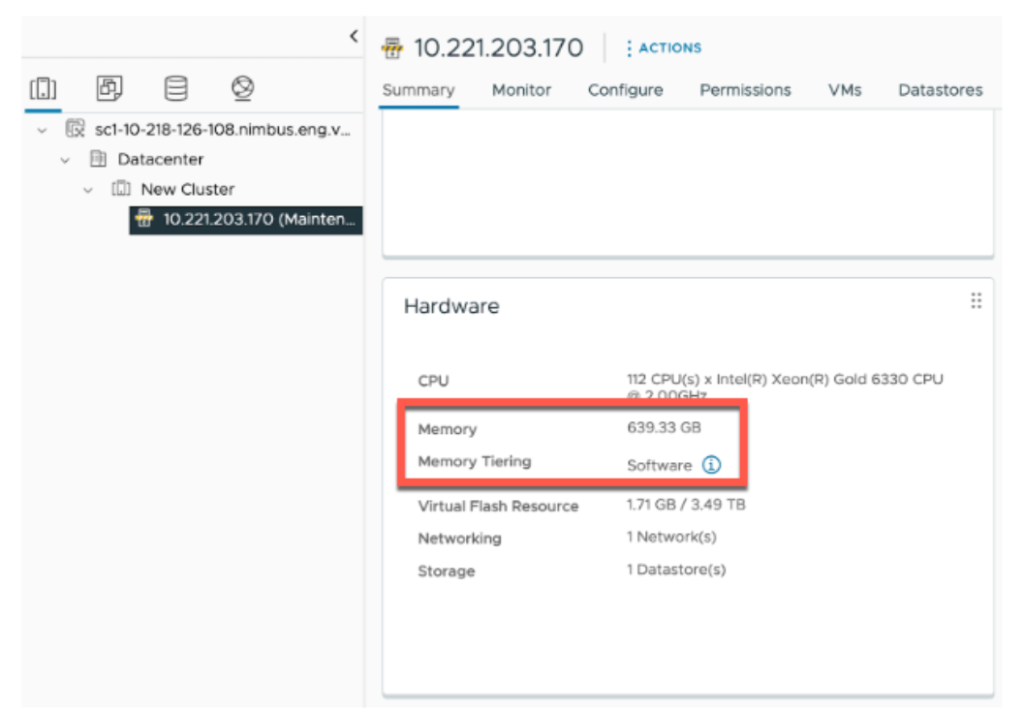VMware Application Acceleration
vSphere Memory Tiering – Tech Preview in vSphere 8.0U3
This is a very exciting feature that we are releasing as tech preview as part of vSphere 8.0 Update 3. Customer can now evaluate the Memory Tiering feature in their lab environments with vSphere 8.0 U3.
In essence, Memory Tiering leverages less expensive devices to act as memory. In vSphere 8.0 Update 3, vSphere leverages PCIe-based Flash NVMe devices to act as a second layer of memory, resulting in an increase of available memory within the ESXi host. Memory tiering over NVMe optimizes performance by directing VM memory allocations to either NVMe devices or faster dynamic random-access memory (DRAM) in the host. This allows for an increase of memory footprint and workload capacity, while reducing the total cost of ownership (TCO).
Memory Tiering also addresses core-to-memory imbalances, and aids in better workload and VM consolidation.

Memory Tiering is configured on each host on a cluster, and all host must be running vSphere 8.0U3. The default configuration ratio of DRAM to NVMe is 4:1 ratio but can be changed to utilize more NVMe resources as memory.

For a Technical Guidance on deployment please visit this KB Article
Discover more from VMware Cloud Foundation (VCF) Blog
Subscribe to get the latest posts sent to your email.






